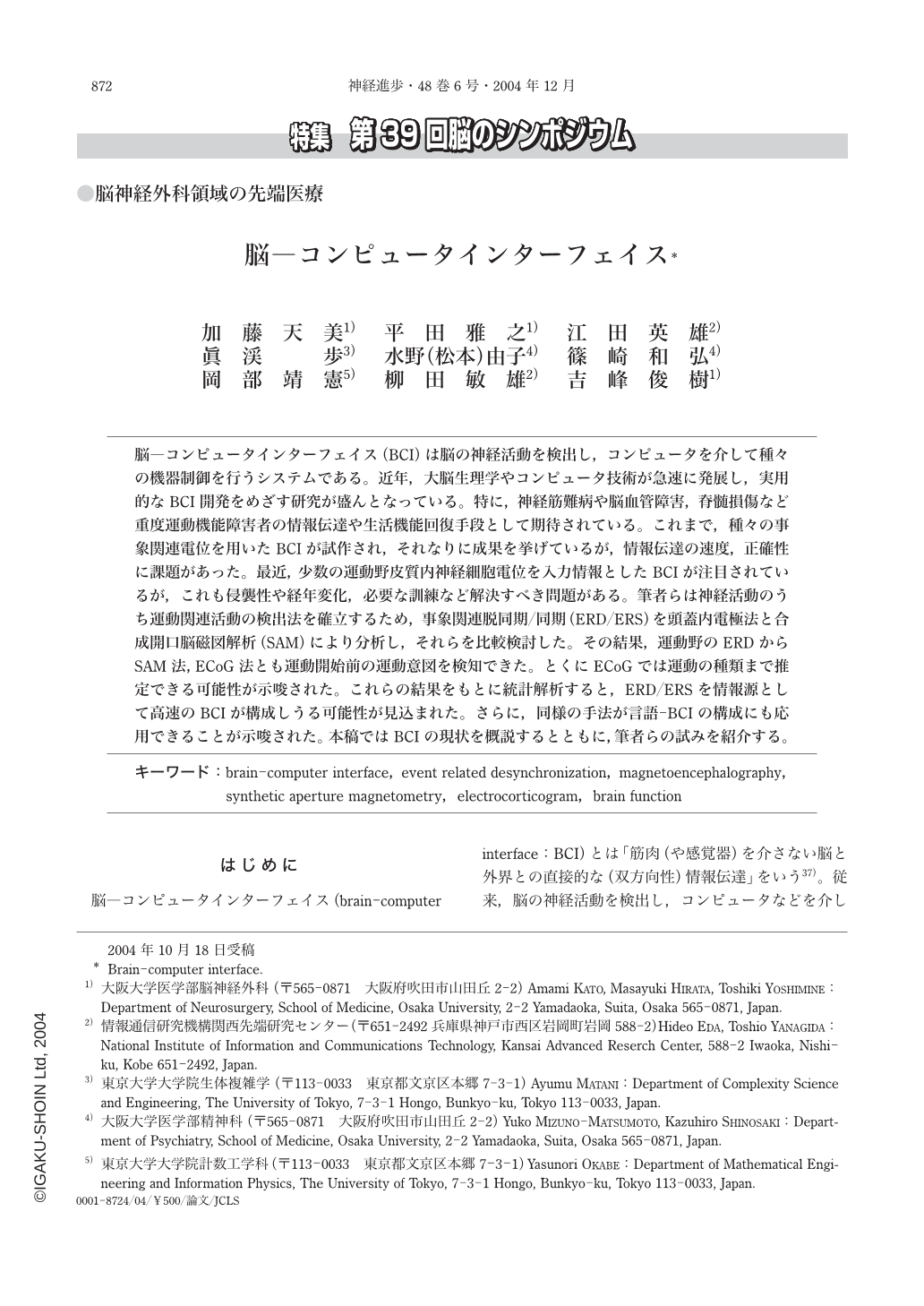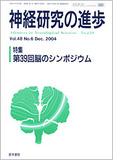Japanese
English
- 有料閲覧
- Abstract 文献概要
- 1ページ目 Look Inside
脳―コンピュータインターフェイス(BCI)は脳の神経活動を検出し,コンピュータを介して種々の機器制御を行うシステムである。近年,大脳生理学やコンピュータ技術が急速に発展し,実用的なBCI開発をめざす研究が盛んとなっている。特に,神経筋難病や脳血管障害,脊髄損傷など重度運動機能障害者の情報伝達や生活機能回復手段として期待されている。これまで,種々の事象関連電位を用いたBCIが試作され,それなりに成果を挙げているが,情報伝達の速度,正確性に課題があった。最近,少数の運動野皮質内神経細胞電位を入力情報としたBCIが注目されているが,これも侵襲性や経年変化,必要な訓練など解決すべき問題がある。筆者らは神経活動のうち運動関連活動の検出法を確立するため,事象関連脱同期/同期(ERD/ERS)を頭蓋内電極法と合成開口脳磁図解析(SAM)により分析し,それらを比較検討した。その結果,運動野のERDからSAM法,ECoG法とも運動開始前の運動意図を検知できた。とくにECoGでは運動の種類まで推定できる可能性が示唆された。これらの結果をもとに統計解析すると,ERD/ERSを情報源として高速のBCIが構成しうる可能性が見込まれた。さらに,同様の手法が言語-BCIの構成にも応用できることが示唆された。本稿ではBCIの現状を概説するとともに,筆者らの試みを紹介する。
Brain-computer interface(BCI)is a system that allows a person to communicate with his environment by detecting his intention without the use of muscles or peripheral nerves. The interfaces are aimed to be used by handicapped patients who are not otherwise able to communicate with their environment. BCI is basically composed of 1. Sensors which collect and digitize the signals from the brain;2. Algorithm installed in a computer which decodes his intention and encodes into the control signals for external devices;and 3. Feedback mechanism, mostly substituted by vision. In recent years significant progress in computer science and informatics has accelerated developing many types of BCIs based on modern neurophysiological evidences.
Event related synchro-/desynchronization(ERS/ERD)is known closely correlates with the activation of brain function. We have analyzed ERS/ERD of different frequency bands evoked in the sensorimotor cortex during motor tasks for development of BCI with faster and precise intention transfer. The subjects were patients with intractable thalamic pain who have been implanted subdural grid electrodes for motor cortex stimulation therapy. ECoG was recorded around sensorimotor area(Brodmann areas 4, 6, 3 and 2)with the sampling rate of 1,000Hz during three different motor tasks(hand grasping, thumb flexion, wrist flection, and elbow flexion). The power spectrum of those signals were analyzed and statistically compared between the resting and active states.
As the results, ERD of alpha-beta bands was detected 200-250msec prior to the actual movements over wide areas of sensorimotor cortex. The difference of tasks were discriminated according to the location of the activated electrodes which showed stronger statistical significance compared to the adjacent electrodes. The ERS of high gamma band is gradually increased after the initiation of movements. The retrospect statistical analysis disclosed the estimate of information transfer rates reached up to 30 bit/min with accuracy of about 80%.
Our study indicated that ERD evoked in the motor cortices reflects the movement intention and is a good signal source for faster and precise BCI. The possibility of language-BCI using ERD/ERS evoked in the language-related cortices was mentioned. In this paper the neurophysiological history focused on BCI and the techniques that are used are briefly reviewed.

Copyright © 2004, Igaku-Shoin Ltd. All rights reserved.


